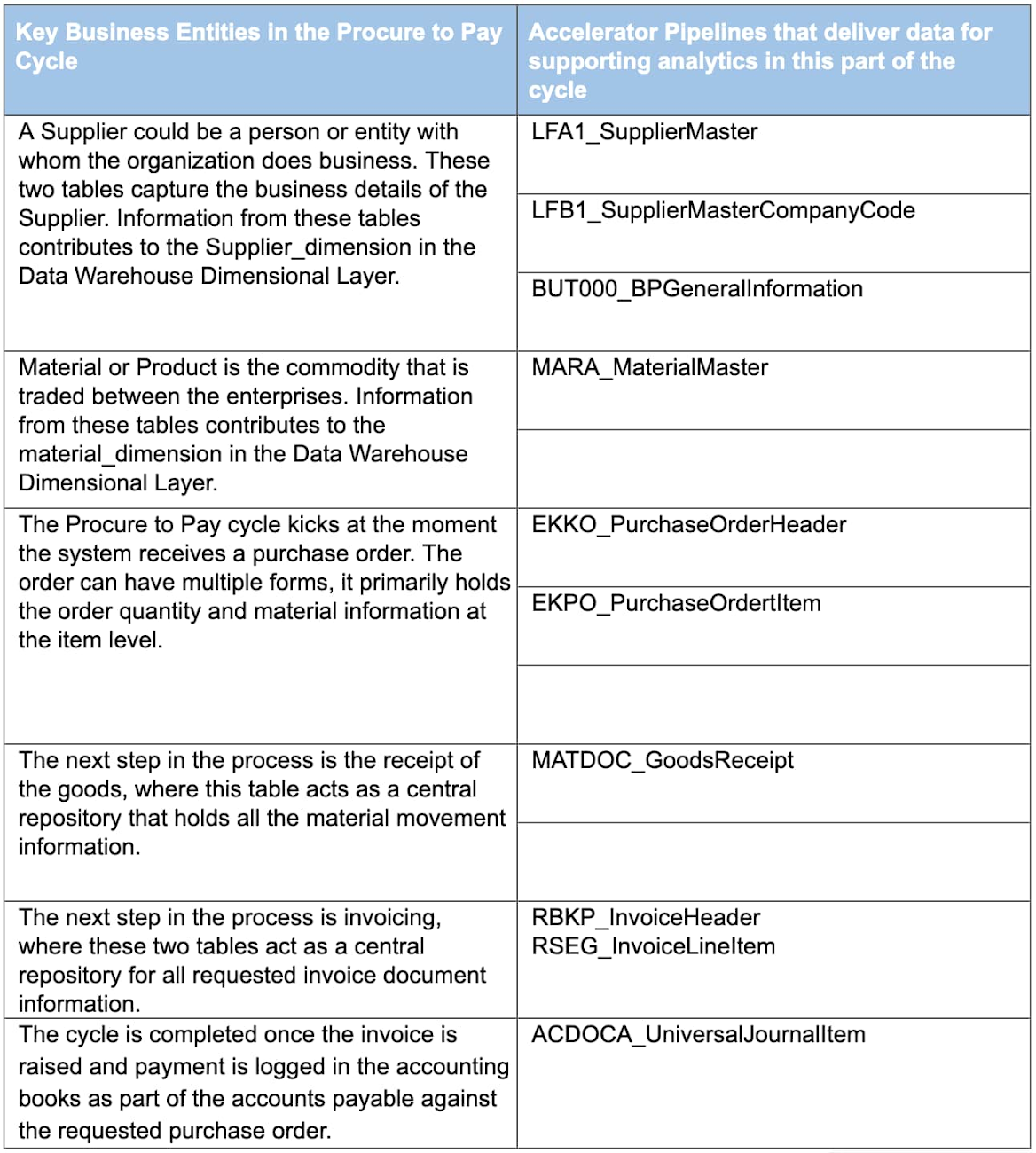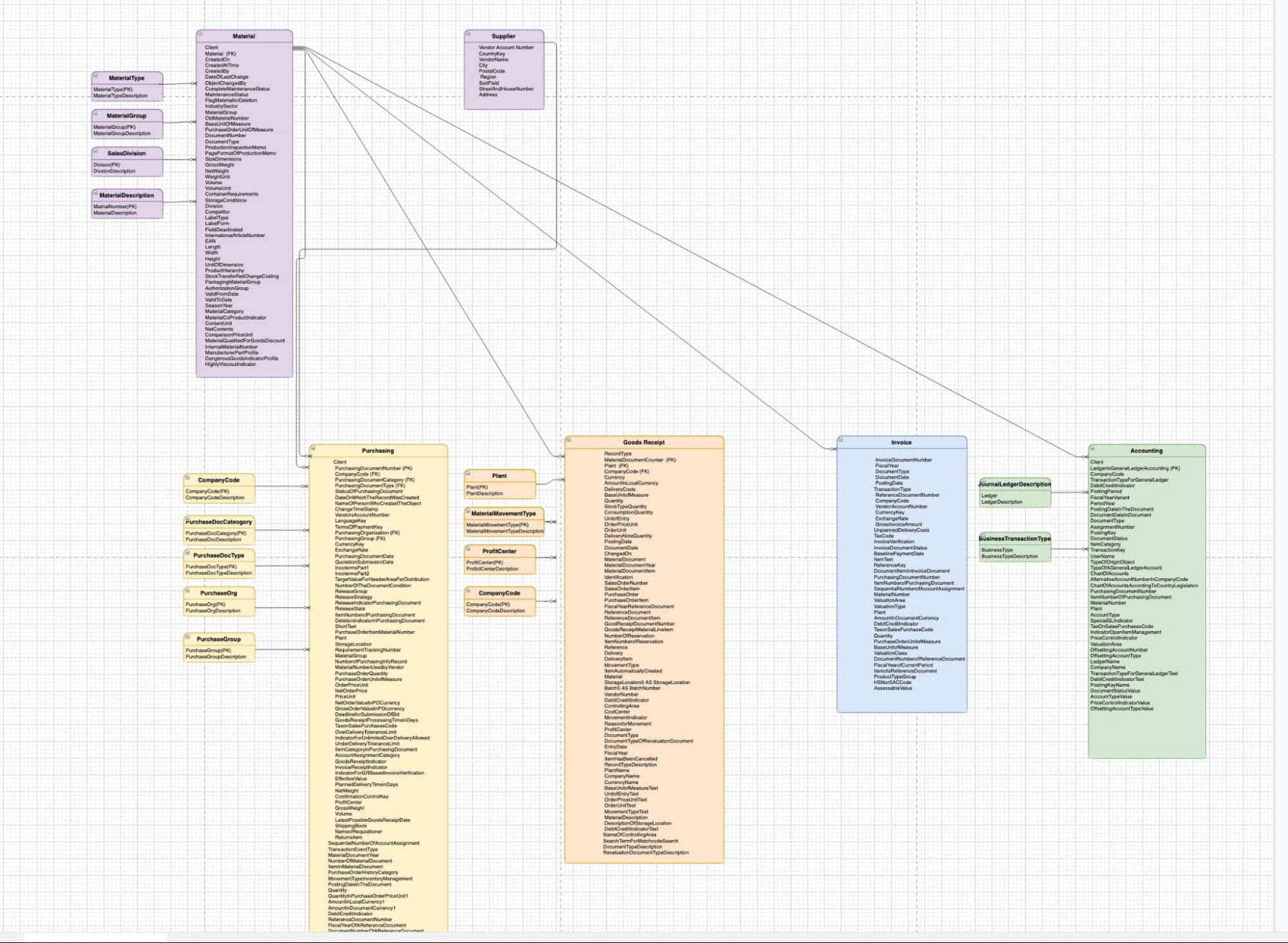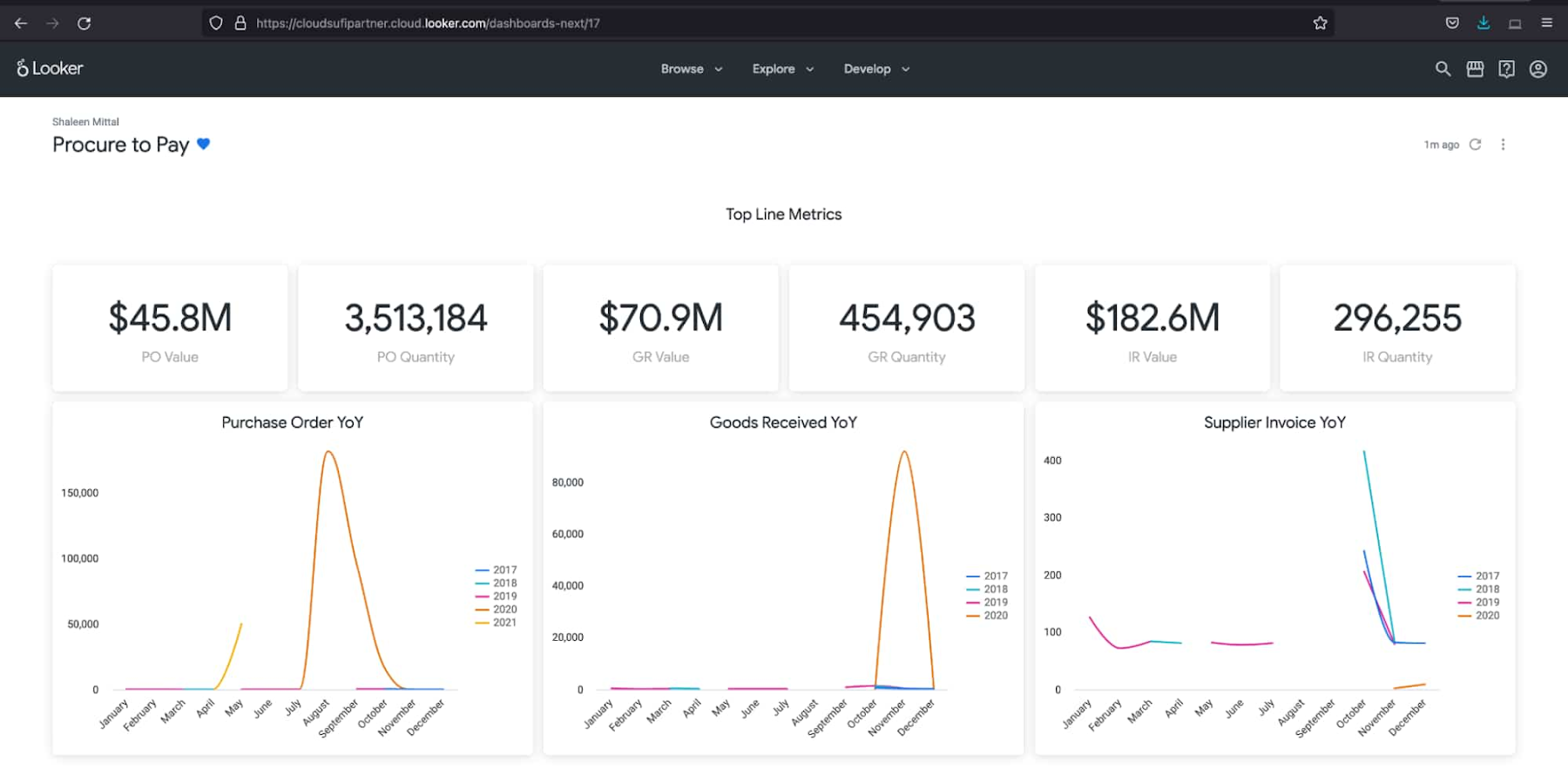Data Fusion SAP accelerator for Procure 2 Pay
Chaitanya (Chai) Pydimukkala
Head of Products, Databases
Earlier this year, we announced SAP Integration with Cloud Data Fusion, Google Cloud’s native data integration platform to seamlessly move data out of SAP Business Suite, SAP ERP, and S4/HANA. This was followed by the release of our accelerator for SAP Order to Cash which simplifies integrating SAP Order to Cash data into BigQuery and allows organizations to gain invaluable insights using Looker.
Even with a reliable and scalable integration platform like Cloud Data Fusion, creating pipelines to incorporate mission-critical enterprise data into warehouses can be tedious. Hence, the accelerator includes:
An SAP connector
Staging and transformation pipelines in the Data Fusion hub to load the staging schema on BigQuery
Target schemas in Google BigQuery for the staging, dimension, and fact datasets
A predefined Looker block with a semantic model and operational dashboards
With these integrations, teams spend less time developing data pipelines, defining key metrics, and building out visualizations and instead spend more time analyzing the information and making informed business decisions.
We are now releasing our accelerator for the procure-to-pay process. Let us look into the details of the process and what the accelerator provides.
What is Procure to Pay?
Procure-to-pay is a critical business process that includes requisition processing, sourcing, purchase order processing, goods receiving, accounts payable management, and reporting. A typical procure-to-pay process involves the creation and maintenance of vendors, direct and indirect materials, purchase requisitions, purchase orders, goods receipt, and billing. Most enterprises depend on these business processes, and they measure success using key performance indicators (KPI’s) around purchase orders, suppliers, cost, etc. As such, It becomes critical for key stakeholders to get insights into these metrics like the procurement cost, cost avoidance, on-contract vs. off-contract spend, supplier scorecard, cost-saving, and overall procurement ROI to effectively measure the health of procurement, develop new sources of supply, and sourcing strategies.
SAP Accelerator for Procure to Pay
As a part of the Google Cloud SAP Accelerators, we are excited to announce the SAP accelerator for procure-to-pay. These accelerators are blueprints and defined content that gives customers a quick start for procure-to-pay scenarios and can be customized as per specific customer needs.
Google offers the following components as a part of the accelerator:
Data integration and transformation using Google Cloud Data Fusion
SAP Connector: SAP Table Reader connector that can be used for initial data load for all tables and incremental data load for selective tables
Staging Pipelines: These pipelines bring the raw data from SAP along with a mapping of abbreviated column names to useful English column names.
Transformation Pipelines: These are simplified BQ Execute pipelines that have embedded SQL statements that can be easily customized for specific customer scenarios.
Critical pipelines and Key Business Entities in Cloud Data Fusion for Procure to Pay


Target Schemas in Google BigQuery
Staging Dataset: The staging dataset is where data extracted from SAP through the Staging Pipelines lands
Dimension Dataset: After the staging dataset has landed, transformation pipelines are used to transform and capture key fields used for reporting. In the procure-to-pay accelerator, two tables are created: supplier_dimension and material_dimension, they contain information about each supplier and material
Fact Dataset: In addition to the dimension dataset, a fact dataset is also created, which contains tables that can be then aggregated in a Business Intelligence tool to calculate KPIs of interest. The procure to pay accelerator provides four tables: purchase_order_fact, goods_receipt_fact, invoice_fact, and accounting_fact which contains metrics around purchase orders, goods receipt, invoice, and accounting postings


Looker Block
Pre-built Semantic Model: The Looker block can be installed through Looker’s in-app marketplace and comes with a pre-packaged LookML model. Here, we have defined KPIs which can be directly used or further customized based on organizational needs
Operational Dashboards: Beyond the LookML model, this block comes with four dashboards that allow users to jump right in and begin analyzing their SAP data. One dashboard presents high-level trends in procure-to-pay while the other allows analysts to drill in and focus on the purchase orders, goods receipts and suppliers.


Getting Started with SAP Accelerator for Procure to Pay
For information on how to configure and run the Cloud Data Fusion pipelines, see the SAP Table Reader Guide and the blog. You can find additional information on the SAP Accelerator for Procure to Pay here.
The Looker block will be released for preview in the Looker marketplace. The LookML powering the block is publicly available in this GitHub repository. You can find details on accessing the Looker marketplace and installing the block here. If you do not have access to a Looker instance and want to try out the block, you can sign up for a free trial here.



